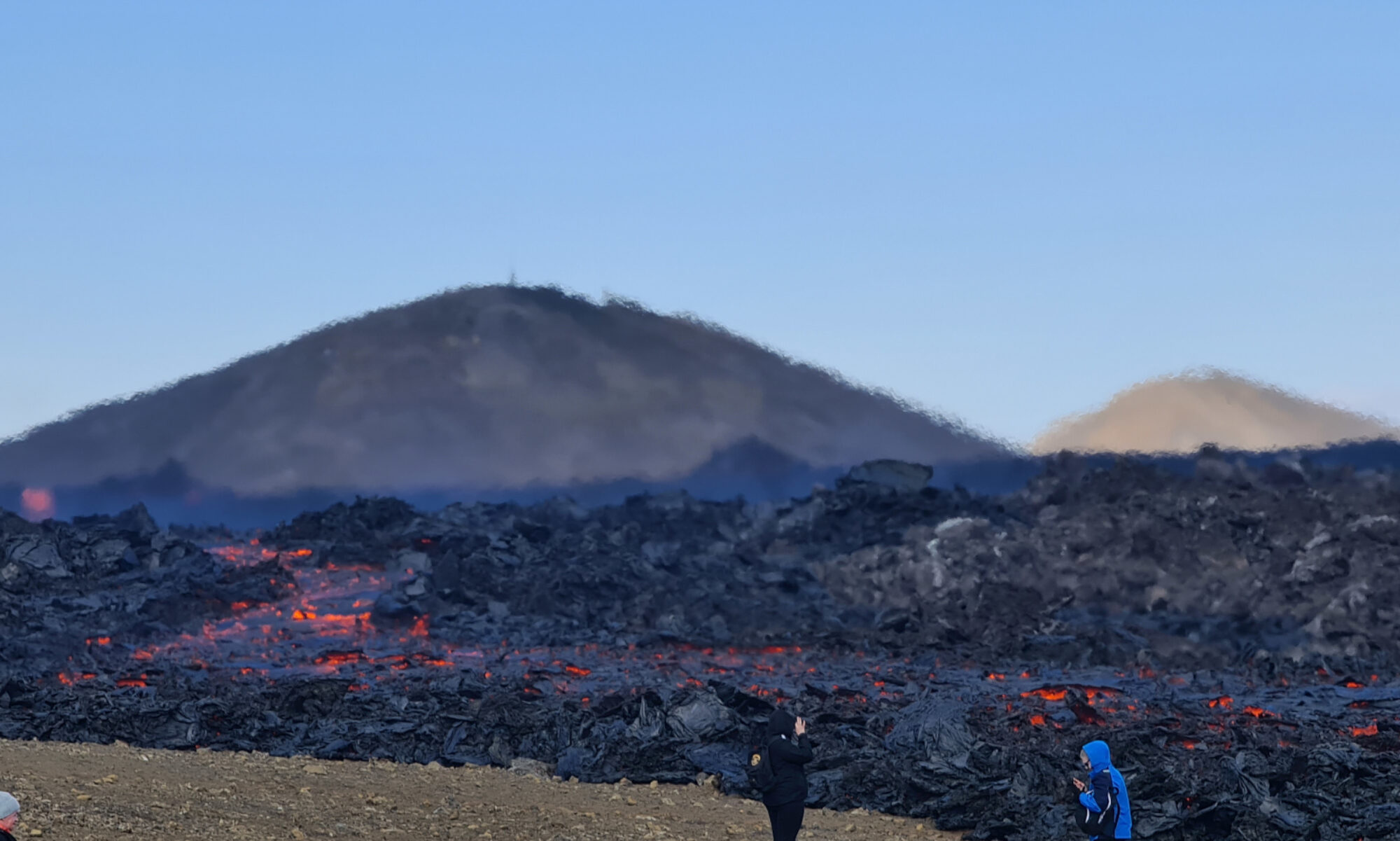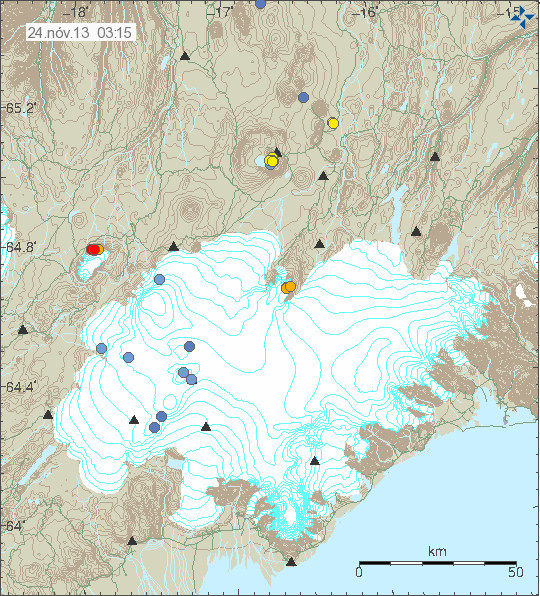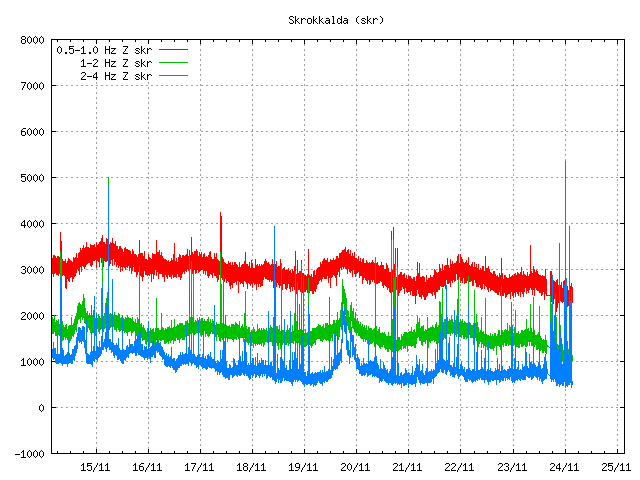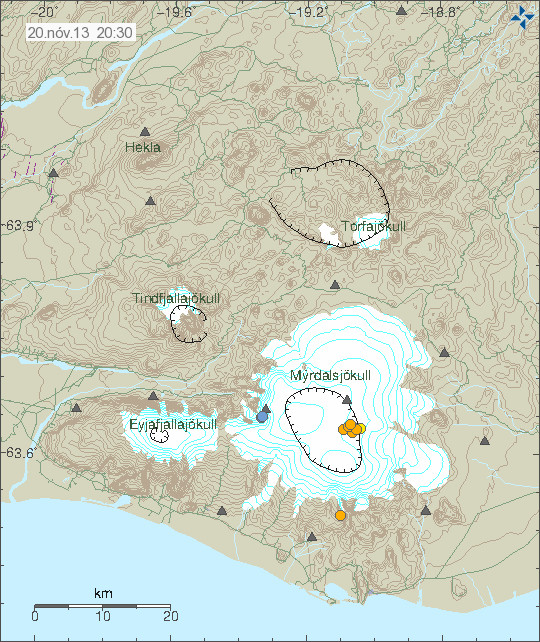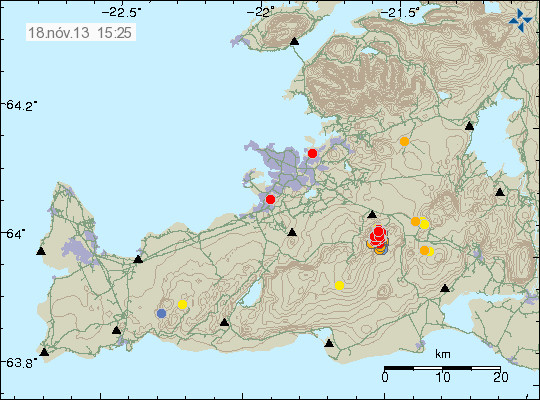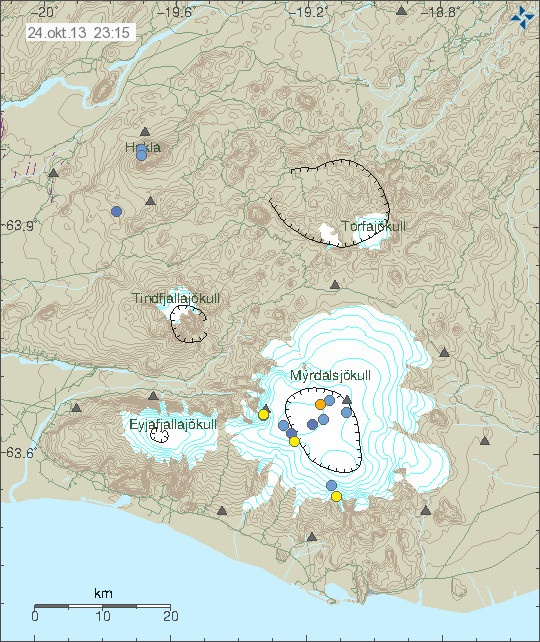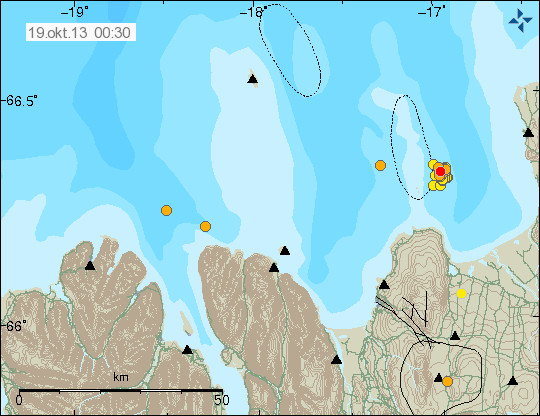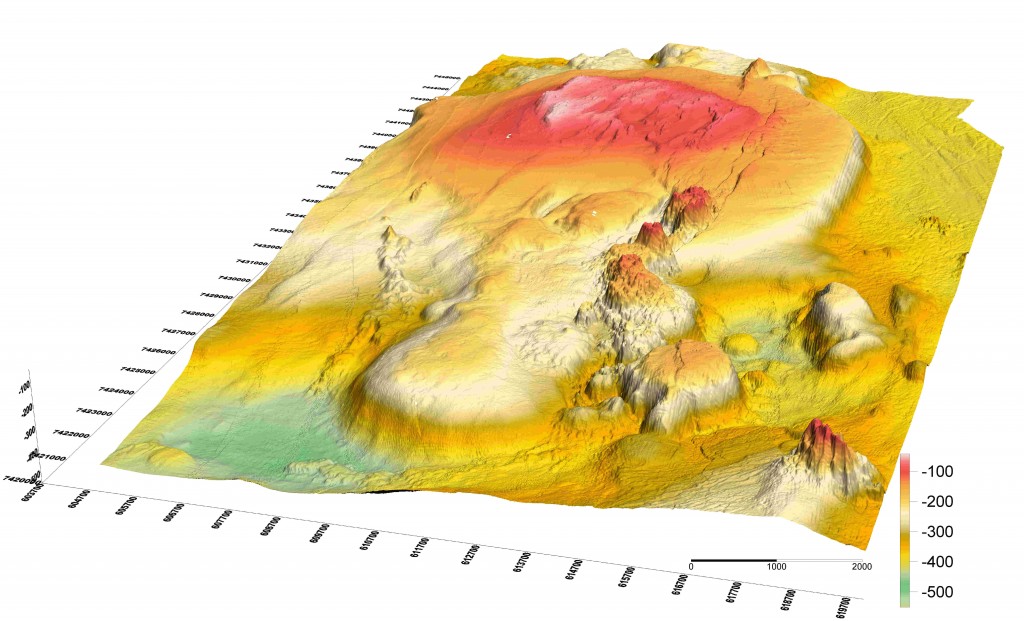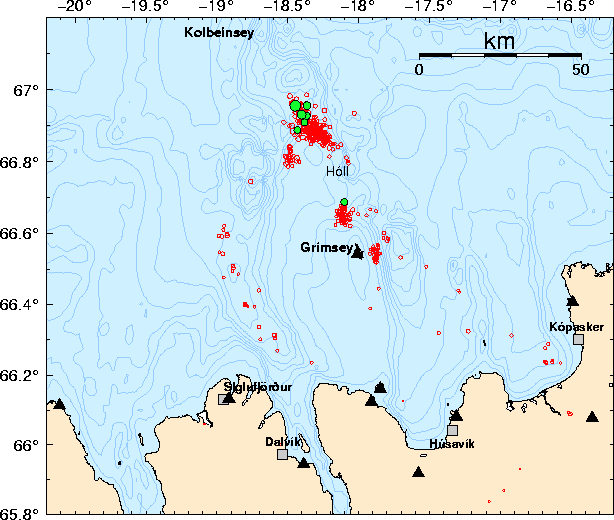On the 21-November-2013 there was an earthquake swarm in Þórðarhyrna volcano (part of Grímsfjall volcano). This was not large earthquake swarm or a strong one. With the largest earthquake just having the magnitude of 1,9. While I did just suspect it I did not have it confirmed until today that following this earthquake swarm was an harmonic tremor pulse. This harmonic tremor lasted from 03:30 to 06:10 UTC. Based on nearby SIL station this was not a strong harmonic tremor, but this is important because it suggests that something is taking place in Þórðarhyrna volcano. If this is going to lead to an eruption is unknown at current time. This might be a dike intrusion into the volcano at depth, but that has not been confirmed.
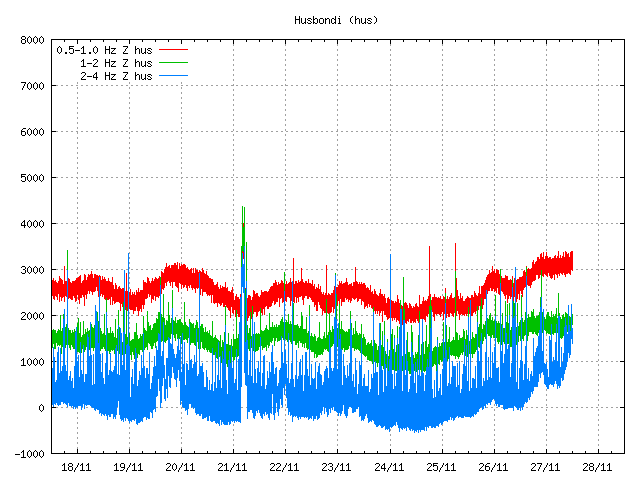
The harmonic tremor pulse can be seen at 21-November date on this tremor plot from Icelandic Meteorological Office. Copyright of this image belongs to Icelandic Meteorological Office.
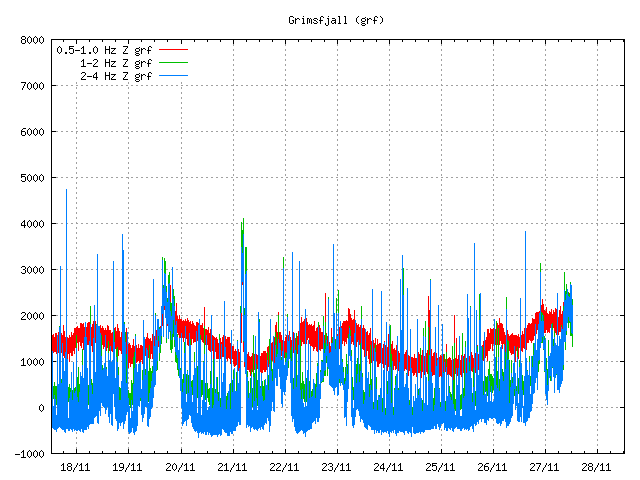
The harmonic tremor pulse as it did appear from Grímsfjall SIL station. Copyright of this image belongs to Icelandic Meteorological Office.

Harmonic tremor pulse as it did appear on Jökulsel SIL station. Copyright of this image belongs to Icelandic Meteorological Office.
This activity might not lead to an eruption, but given the past history of this area and the eruption in Grímsfjall volcano in the spring of 2011 I find it to be highly likely outcome that eruption is going to take place in Þórðarhyrna volcano in near future, it is not possible to know when such eruption might take place. Last eruption took place in Þórðarhyrna volcano in the year 1902, it is not known if any later eruptions have taken place in Þórðarhyrna volcano.
Blog post updated at 14:47 UTC.
